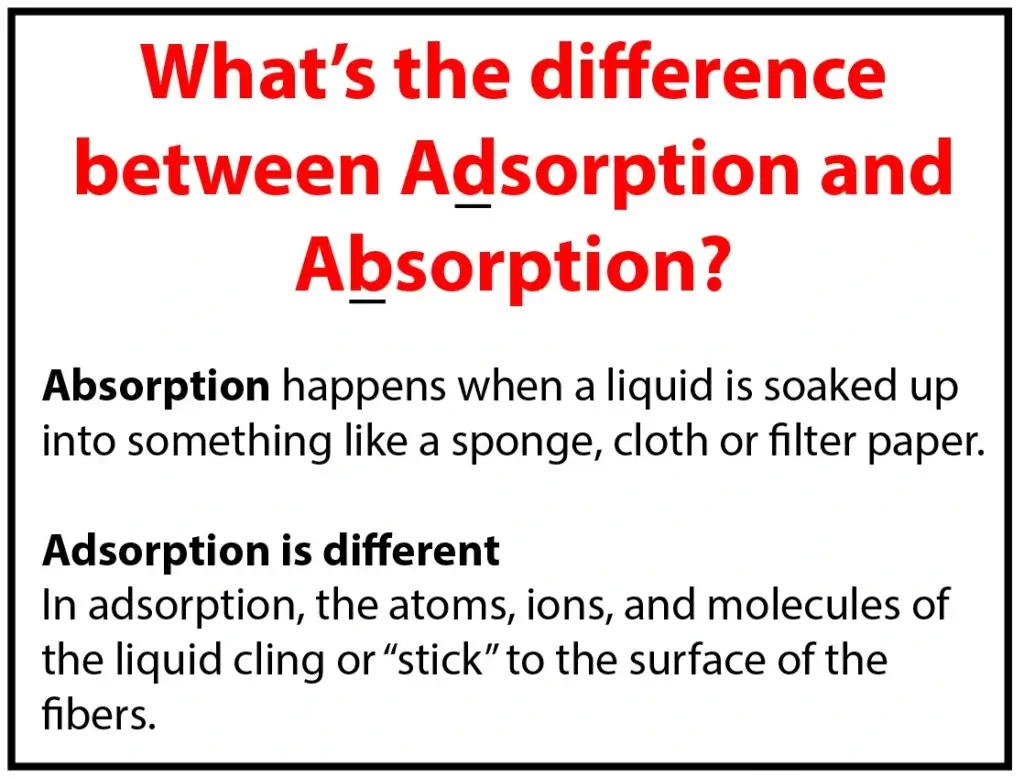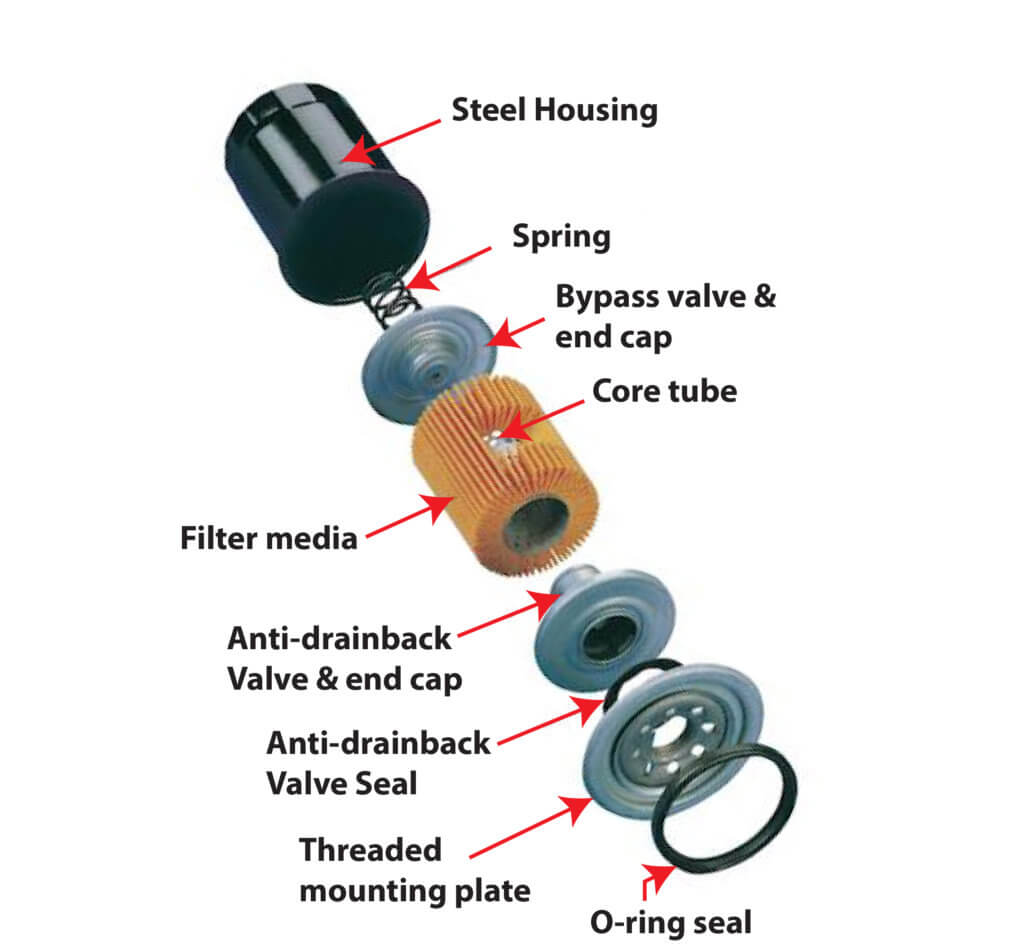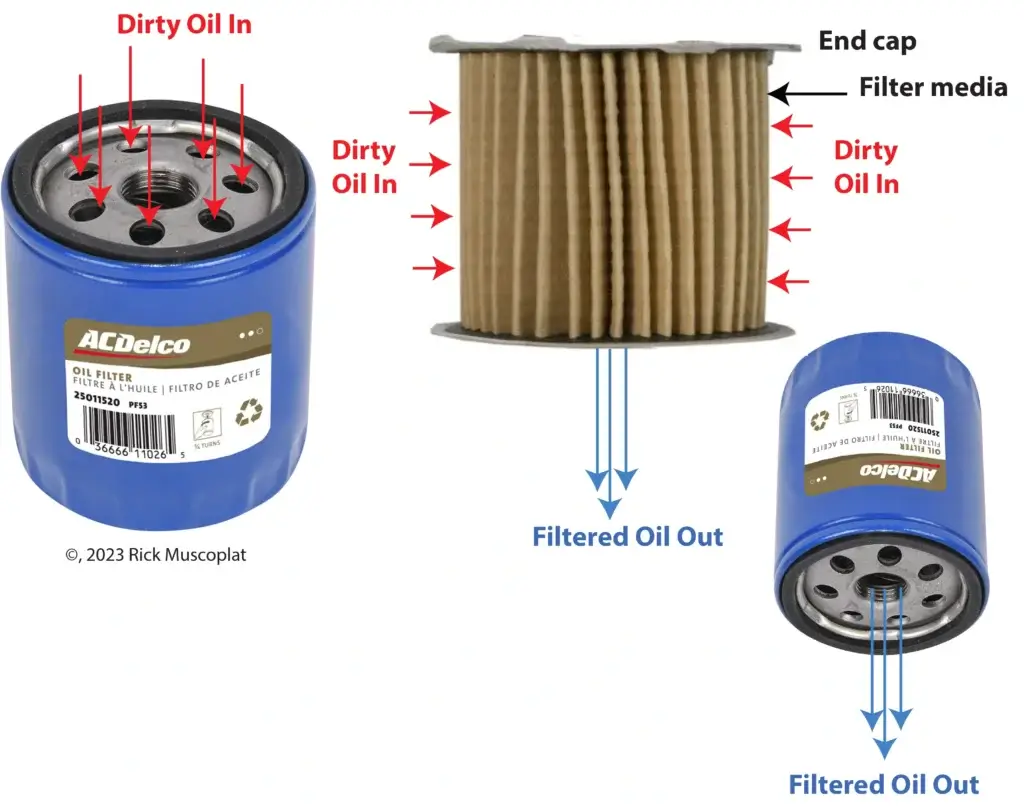What are the differences in oil filters
Synthetic oil filters are made differently and do a better job of filtering
Carmakers recommend synthetic oil to reduce engine wear and extend the time between oil changes. But the oil filter has to remain effective during those extended oil change intervals. So many oil filter manufacturers have developed hybrid oil filters and many DIYers wonder what exactly are the differences in oil filters between the lower cost units and the higher priced “synthetic” oil filters.
What’s inside a spin-on oil filter?
All spin-on oil filters contain the components shown below. The differences in oil filters really comes down to the quality of the filtration media.
However, some filter manufacturers make a big deal about differences in filter’s steel gauge, number of holes in the mounting plate, or type of material used in the end caps and bypass valve. That’s all marketing hype and those differences have nothing to do with the filter’s ability to filter the oil!
What is synthetic filter media?
Synthetic filter media is a blend of synthetic glass and cellulose materials. Synthetic glass is a general term that refers to fibers drawn from molten silica (fiberglass) or thin fibers made from any petroleum based plastics like nylon or polypropylene.
The synthetic fibers can be made into fabric sheets using traditional weaving processes. However, non-woven hot-melt techniques are more cost effective. To make non-woven fabric, a dense mat of fibers is placed on a conveyor and fused together by a hot roller. The density of the fibers determines their filtering abilities.
In most cases, the fabric is then corona treated to give the fabric an electrostatic charge. During the corona treating process, some materials such as fiberglass and nylon give up electrons and become positively charged, while other materials such as Polypropylene, Vinyl (PVC) collect electrons and become negatively charged (more on static charge later).
Once formed into fabric, the material is pleated and fused end-to-end using heat melt methods. The top can bottom edges of the pleats can also be heat melted to end caps or left uncapped.
The pleats are then formed around a supporting metal screen or filter core to maintain stability under pressure.
Now here are the actual differences in oil filters
Cellulose is better at capturing small particles through adsorption and impingement than synthetic fibers. But synthetic glass fibers are more uniform in diameter and smaller in size than cellulose fibers. So filter manufactures can pack more fibers into the same or even smaller footprint, yet still provide better filtration than a conventional cellulose filter of larger size.
In addition synthetic glass fibers can filter out more of the engine-harming particle sizes than cellulose filters. Plus, synthetic fibers don’t break down, absorb moisture, or shed like cellulose fibers. So the filters last longer. Lastly, synthetic glass fiber size is more uniform and that makes for more predictable void sizing and thus more predictable filtration and filter life.
But there are some downsides to both materials
Cellulose fibers are unevenly sized so they be unpredictable in void (pores) sizes, filtration efficiency and useful life. Plus, cellulose fibers can absorb moisture, increasing pressure drop and thus reducing oil flow rates, while also weakening the fabric
Synthetic glass fibers, due to their smooth surface, are less effective at holding adsorbed and impinged particles (scroll down to learn the difference between absorbed and adsorbed and how oil filters work) for long time periods compared to cellulose fibers. Plus, synthetic filters cost more than cellulose filters
For all these reasons, most high quality oil filters are made from a combination of cellulose and synthetic fibers in their “synthetic” filters. In other words, most synthetic filters are actually hybrid filters.
Spin-on filter construction components
• O-ring seal — Seals the spin-on filter to the oil filter housing
• Steel housing — Sheet steel that’s formed into a can shape with flutes on one end. The gauge of the steel is irrelevant as long as it withstands the reasonably low pressure found in an engine, which is usually less than 100-psi. Even the cheapest filters can easily handle that pressure and a heavier gauge can doesn’t provide any advantage.
• Threaded mounting plate (aka tapping plate) — This is the part that screws onto the oil filter housing. It has a series of holes to allow oil into the pleated area and center hold to allow filtered oil back into the engine.
• Anti-drain-back valve — Made of neoprene or higher quality silicone, the valve prevents the oil from flowing out of the filter when the engine is off. By keeping the oil filter filled, oil pressure can build rapidly during engine starts.
• End cap that are glued to the top and bottom of the pleats to prevent oil from flowing around the pleats and down into the core tube. The end cap can be resin-coated fiberboard, plastic or metal. The actual end cap material has no bearing on the filter’s efficiency. Much has been made of the type of material used in end caps but real filter have always known that was a red-herring. In fact, the canister filters used on late model engines don’t even have end caps
• Filter media — A standard pleated cellulose filter “paper” made from a combination of organic wood pulp fibers, cotton, and other cellulose fibers that are formed into a sheet.
• Bypass valve — The bypass valve opens when the filter is full, allowing dirty oil to flow back into the engine.
How conventional oil filters filter oil
The three steps of oil filtration in a cellulose oil filter— adsorption, impingement, and screening (direct interception)
Step One: Adsorption
During the manufacturing process, cellulose fibers are  abraded to make them thicker and fluffier which increases the fibers’ surface area. The additional surface area allows the fibers adsorb more of the smaller particles before the oil travels around the fiber.
abraded to make them thicker and fluffier which increases the fibers’ surface area. The additional surface area allows the fibers adsorb more of the smaller particles before the oil travels around the fiber.
The higher the surface area, the higher the adsorption rate of the filtration media.
Step two: Impingement
Whatever particles aren’t captured by way of adsorption continue to travel around the thick cellulose fibers until they are driven into the fibers by the force of movement. In other words, the particles are driven into the fiber at a greater depth than the electrostatic attraction that happens at the surface in the adsorption process. This particle separation is called impingement. As with adsorption, the more impingement a media provides, the more particles are separated without plugging the voids between the fibers.
Step three: Screening
As the name implies, screening is the process of capturing particles by trapping them in the voids between the fibers. Adsorption causes the smallest particles to cling to the fibers. Impingement causes the next largest size fibers to be driven into and captured by the fiber itself. Screening the last opportunity to trap the largest particles that have escaped the previous two filtration methods.
How synthetic oil filters filter oil
Step One: Adsorption
In a one-on-one comparison the smooth exterior surface of synthetic glass fibers provides less surface than the fluffier cellulose fibers and thus has less adsorptive capabilities. However, the filter manufacturers make up for some of that loss by imparting an electrostatic charge to the fibers to attract and hold small particles. Overall, synthetic glass fibers don’t adsorb as many small particles as cellulose fibers.
Step two: Impingement
Due to their lack of a fluffy surface and soft structure, synthetic glass captures fewer particulate matter than a cellulose material
Step three: screening or direct interception
Because synthetic fibers are more uniform in size and can be formed into a denser mat, they can screen out smaller particles than cellulose materials. In other words, they have many more particle trapping voids that can trap and hold much smaller particles than cellulose
How oil flows through an oil filter
• Oil flows into the pleats, through the cellulose material and the filtered oil flows out through the center core.
©, 2023 Rick Muscoplat
Posted on by Rick Muscoplat

